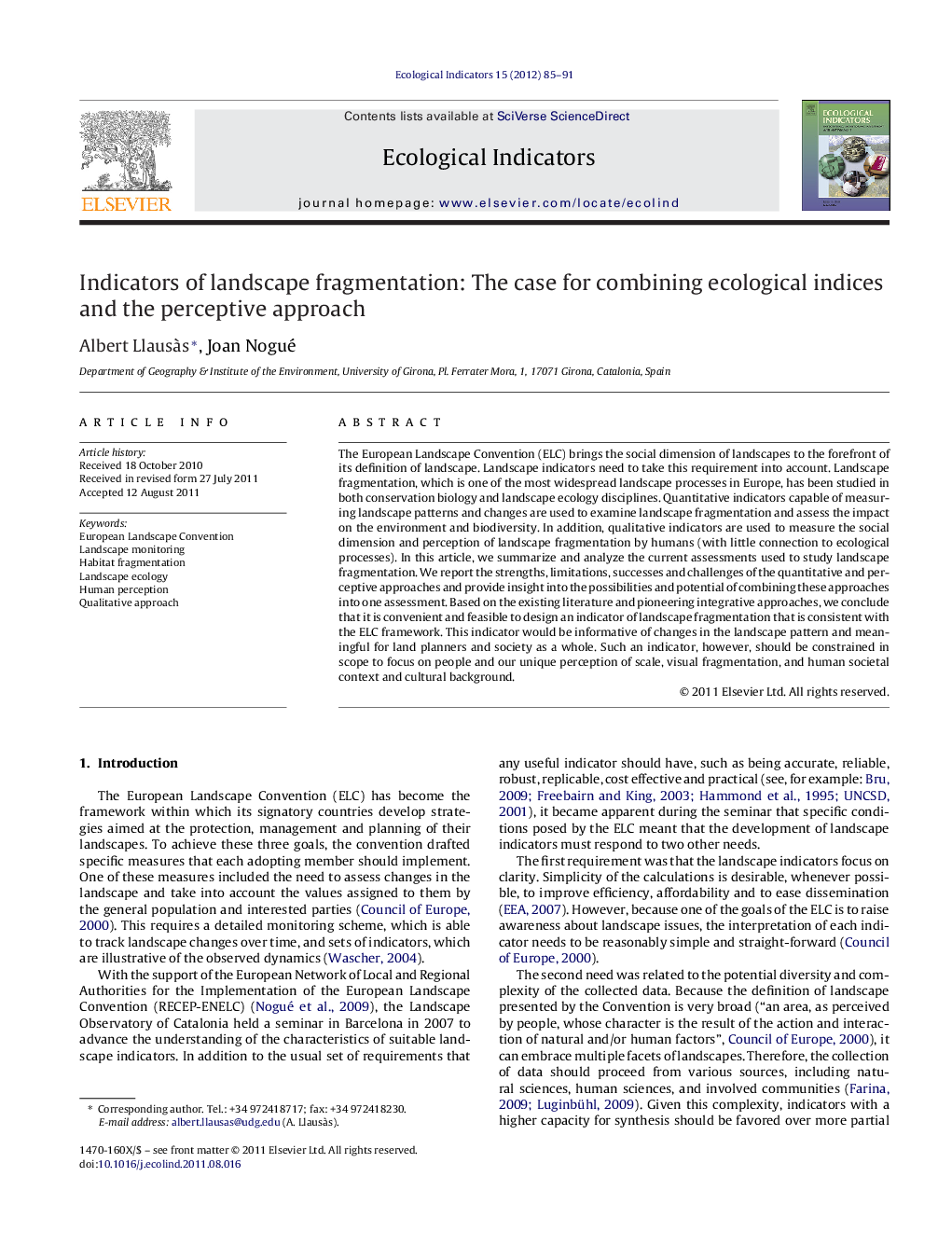| Article ID | Journal | Published Year | Pages | File Type |
|---|---|---|---|---|
| 4373917 | Ecological Indicators | 2012 | 7 Pages |
The European Landscape Convention (ELC) brings the social dimension of landscapes to the forefront of its definition of landscape. Landscape indicators need to take this requirement into account. Landscape fragmentation, which is one of the most widespread landscape processes in Europe, has been studied in both conservation biology and landscape ecology disciplines. Quantitative indicators capable of measuring landscape patterns and changes are used to examine landscape fragmentation and assess the impact on the environment and biodiversity. In addition, qualitative indicators are used to measure the social dimension and perception of landscape fragmentation by humans (with little connection to ecological processes). In this article, we summarize and analyze the current assessments used to study landscape fragmentation. We report the strengths, limitations, successes and challenges of the quantitative and perceptive approaches and provide insight into the possibilities and potential of combining these approaches into one assessment. Based on the existing literature and pioneering integrative approaches, we conclude that it is convenient and feasible to design an indicator of landscape fragmentation that is consistent with the ELC framework. This indicator would be informative of changes in the landscape pattern and meaningful for land planners and society as a whole. Such an indicator, however, should be constrained in scope to focus on people and our unique perception of scale, visual fragmentation, and human societal context and cultural background.
